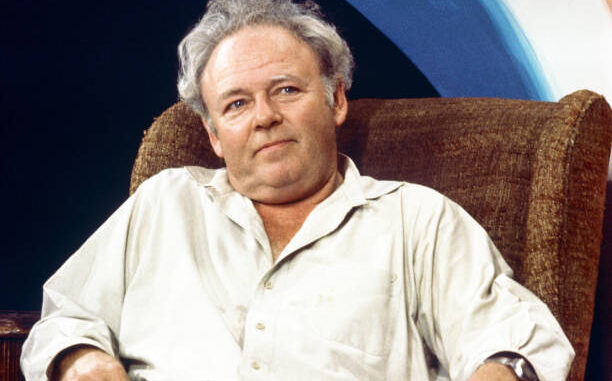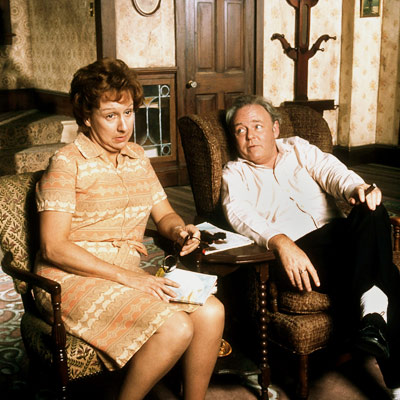
The Smithsonian Institution’s National Museum of American History in Washington, D.C. has a ton of incredible television artifacts. The collection prides itself in offering an in-depth glimpse into the most important television shows of all time. Among the priceless displays are such incredible relics as Mr. Rogers’ sweater, a sign from Sesame Street, and even a screen-worn Hawaiian shirt from Magnum P.I. However, far and away the most recognizable and astounding piece in the collection is the chair that Archie Bunker sat in on All in the Family.
Close your eyes and picture Archie. He’s sitting down, isn’t he? While the show’s dialogue is what made it memorable, the set is what made it believable. 704 Hauser Street had such a specific, lived-in feeling that grounded the characters in the real world. They reflected reality back to us, instead of a glitzy Hollywood set. The centerpiece of the whole household set, of course, was Archie’s chair. Now, the original (along with Edith’s counterpart) sits in the Smithsonian. It cost the producers thousands to create an exacting replica when the first one was donated for an exhibit in 1978.
Norman Lear, who developed the series, spoke with The Los Angeles Times in ’78 about the ceremonial procedure of displaying the already-famous chair. It was a family affair; Lear’s mother Jeanette Lear Gladstein, was on hand to offer her thoughts on the ordeal as well.
Lear asked his mother what came to mind every time she saw Archie take his place in his chair on TV.
“Your father’s red leather chair,” she said. “Anyone could sit in it when he wasn’t home, but when he was there…”
It was no coincidence that Archie’s chair resembled Norman Lear’s father’s. All in the Family was always rooted in real people, first and foremost.
“My father’s chair was the object of the den,” said Norman Lear. “On Sunday nights, the family would listen to Jack Benny, Eddie Cantor, and Fred Allen on our old Atwater-Kent radio. My father would sit in that chair and control the dials. When I wrote All in the Family, it was natural that Archie would have his own chair and control the television set.
“I’d sit in it whenever he went out, listening to the Friday night fights, pretending I was my father.” The elder Lear had passed away some seventeen years before the chair entered the exhibit.
“I think about him a lot,” Norman Lear reflected. “I hope he knows somewhere that this is going on tonight.”
